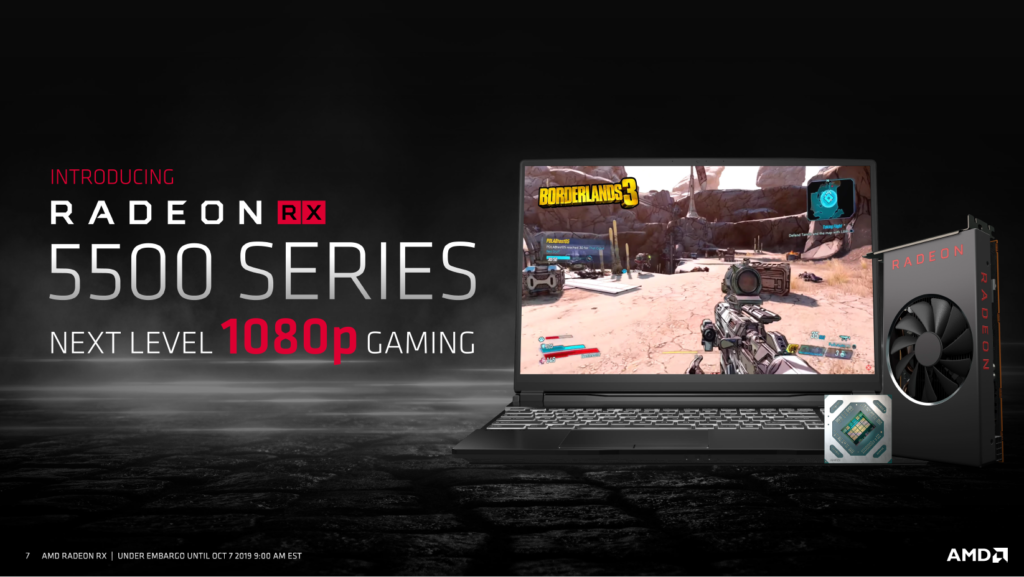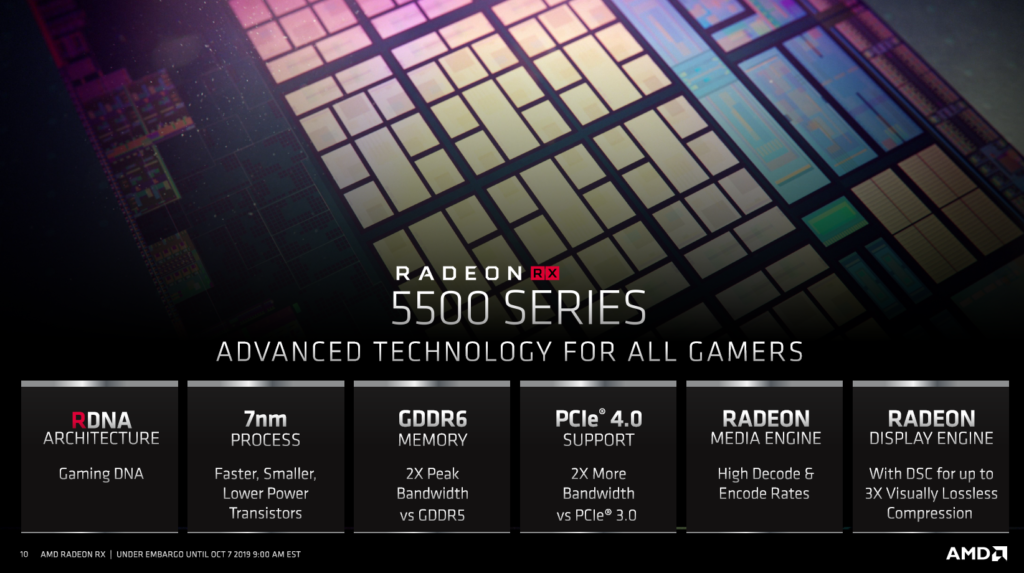AMD Radeon RX 5500 Series
The Radeon RX 5500 Series is geared around the 1080p gaming experience. Radeon RX 5700 series is geared for the 1440p gaming experience, and this lower tier will offer the 1080p gamer a good experience.
These are the only specifications AMD has released about the Radeon 5500 Series. There are no video card specific speciation’s just yet. The top-level specs here say the Radeon RX 5500 Series will have 22 Compute Units, 1408 Stream Processors, 5.2 TFLOPs (up to), a Game Clock up to 1717MHz and a Boost Clock up to 1845MHz. It will also have 8GB of GDDR6 memory but on a 128-bit memory bus.
The narrower memory bus will directly reduce board costs for manufacturers, and with GDDR6 some of that memory bandwidth loss can be made up by frequency.
For comparison, the Radeon RX 5700 Series has 40 Compute Units, 2560 Stream Processors, 1755MHz Game Clock, and 1905MHz Boost Clock. It has 8GB of GDDR6 on a 256-bit bus.
In addition, there will also be a Radeon RX 5500M mobile GPU that will be made for laptops. This GPU will also have 22 Compute Units and 1408 Stream Processors; however, the clock speeds are lower with a Game Clock up to 1448MHz and a Boost Clock up to 1645MHz which lowers the TFLOPs to 4.6. It will also have less VRAM at 4GB but still GDDR6 and a 128-bit memory bus.
Efficiency
In this slide, you can see that compared to the Radeon RX 480 GPU Ellesmere, Radeon RX 5500 GPU will have 1.6x performance per watt and 1.7x performance per area. The die size is 158mm2 versus 221mm2 on 14nm Radeon RX 480.
The cost savings versus Ellesmere and Polaris will be the more efficient 7nm architecture and smaller die size, 128-bit memory bus reducing board cost, reduced number of compute units and stream processors needed, using GDDR6 memory. All of these things combined should make manufacturing Radeon RX 5500 Series GPUs more cost-effective with better yields compared to previous Ellesmere and Polaris GPUs. This is a big reason for replacing Ellesmere and Polaris, just like AMD did with Vega.
You also get the newest Radeon Media Engine and Display Engine with these new video cards. This allows high encode and decode performance, and DSC support in the display engine. The Radeon RX 5500 Series also supports PCI-Express 4.0.




